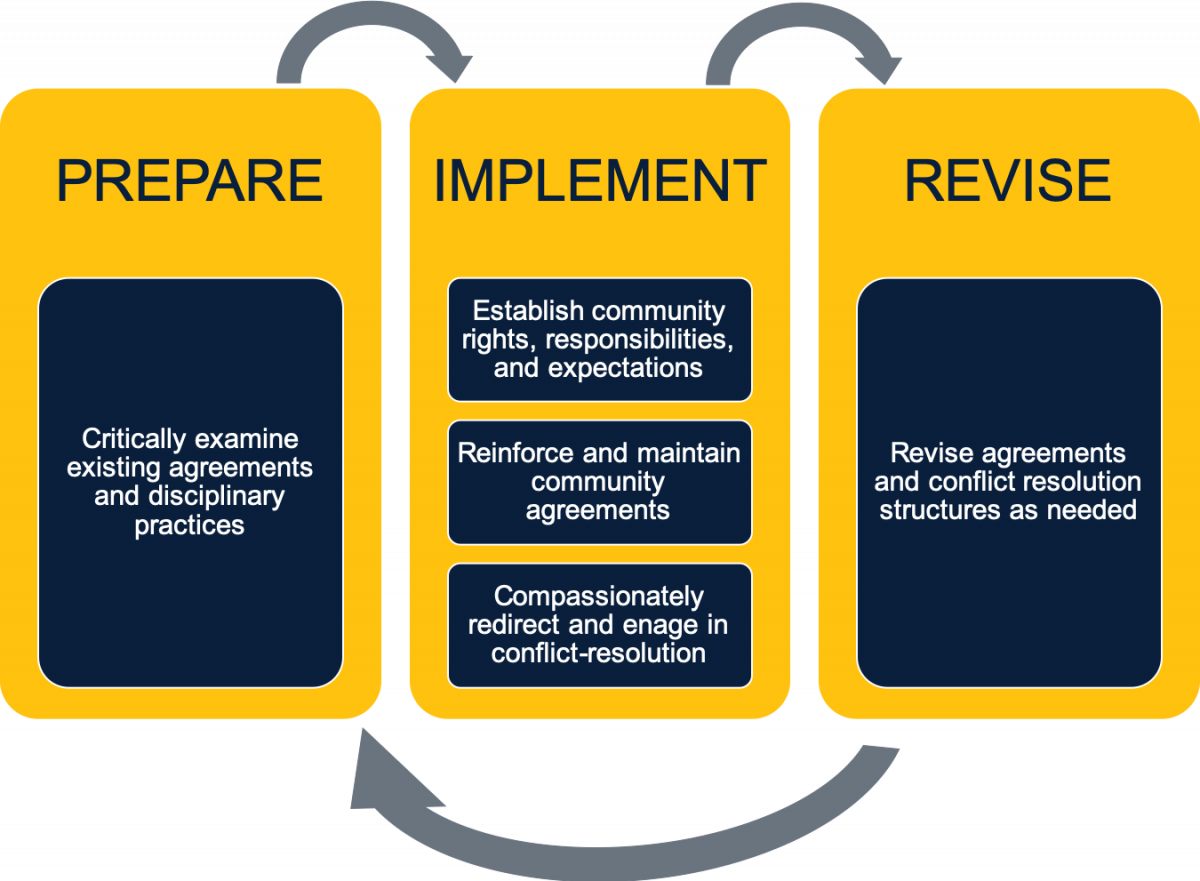What is establishing and maintaining community expectations and agreements about behavior?
Teachers set and maintain community expectations and establish classroom environments that preserve students’ dignity and autonomy, while allowing for a productive and safe classroom community. They understand the difference between the helpful use of boundaries to provide structure and the oppressive use of power to control. They develop proactive and reactive systems to establish, maintain, and respond to these expectations and behaviors in ways that focus on both the community and students’ learning. Choosing and using expectations and agreements requires discretion because many common expectations for behavior privilege dominant ways of being related to race, class, and gender and lead to harmful consequences for students.
How does establishing and maintaining community expectations and agreements about behavior advance justice?
Perceptions of students’ behavior, understanding, effort and engagement occur through the lens of the social identities (racial, ethnic, linguistic, gendered, class-based, etc.) of teachers and children. Because of the close relationship between dominant White middle-class norms and the culture of schooling, the classroom environment and teachers’ interactions with children often, explicitly or invisibly, limit opportunities for students who do not share these norms. In contrast, this practice calls on teachers to manage the classroom environment in ways that keep students in the classroom, make positive, significant differences for children, and disrupt inequitable patterns that flow from broader sociocultural structures. Central to this practice is a teacher’s high level of regard for students as full humans and an unwavering respect for their rights. It is interwoven with the work of building strong relationships with students as individuals and as a community. It differs from traditional notions of “classroom management,” which have been associated with ideas and systems related to compliance and control, exclusion, and the need to get children to “obey.”
What are the elements of the practice?
The diagram below break down the work that teachers do when they are establishing and maintaining community expectations and agreements about behavior. This breakdown, or decomposition, helps teacher educators to break down the practice into a set of parts that can be observed and practiced.
